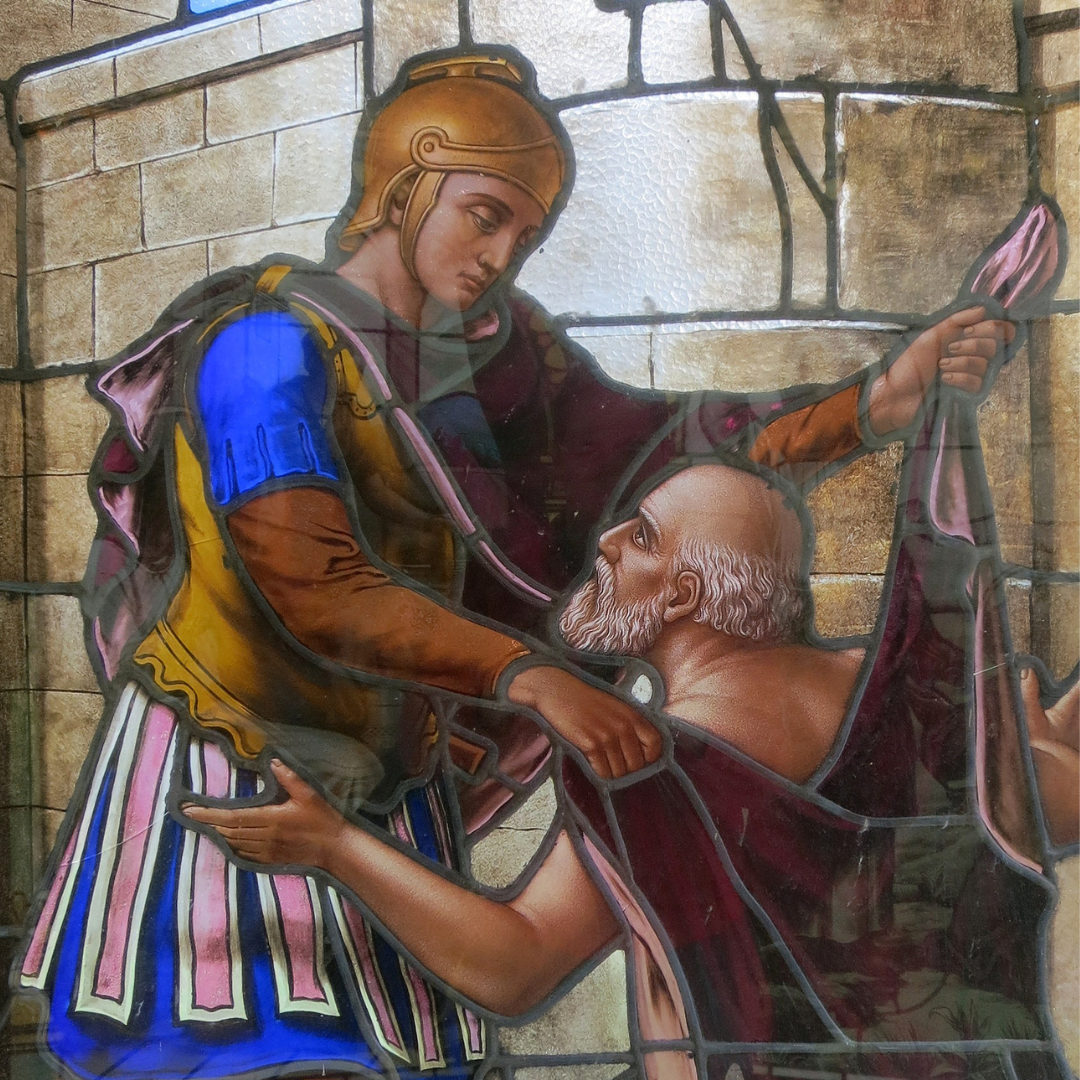Nov. 10, 11, and 12 are a trio of saints’ feast days that have long captured my attention: Saint Leo the Great, Saint Martin of Tours, and Saint Josaphat.
Each is a role model to me of what clergy, at their best, look like.
Saint Leo the Great was Pope from 440 to 461.
He faced many challenges with great strength and courage. In his time, the Roman Empire in the West collapsed, and he faced Attila the Hun, and other tribal leaders seeking to plunder, murder, rape, and destroy everything in their paths down the Italian Peninsula.
He put himself between such armies and his flock. He dealt with multiple heresies from within the Church. He exercised holiness, prudence, and courage in the face of all of these.
Saint Martin of Tours lived from 316-397.
He converted to Christianity as a young man and was a member of the Roman Army in its cavalry. By 361, he left the military and joined the monastic life.
In 371, he was the bishop of Tours, France, and tirelessly labored for his flock, protecting them from heresy. Even in old age, he used the last of his energy to bring peace to a divided clergy in one of his parishes.
Saint Josaphat lived from 1580-1623 in present-day Belarus.
He became a monk and bishop in a turbulent time. There were great struggles between the Orthodox and Catholics in the region.
St. Josaphat became the archbishop to the Ruthenian Rite, and his personal witness of holiness and courage caused many conversions to the point where his enemies nicknamed him the “Thief of Souls.” His unwillingness to stop led to his martyrdom.
These three men are heroes and models of what my life as a cleric should look like.
I can’t say I have achieved such a level of holiness, courage, and strength just yet…but it is my goal.
(That is the prelude to the main part of this post.)
I had get-to-know-you sessions with my school families. What I hear there is what I hear elsewhere and see on social media.
There is much fear and uncertainty about what is happening in our society, country, and church.
A common theme is that the leadership in both the country and church is detached from their citizens and flocks. I don’t think that is completely true, but it is mostly true.
That detachment is read as an uncaring attitude and an abandonment. Maybe so or maybe not, but perception changes reality.
I will not go into the public sphere here, but I do want to address the religious sphere.
People feel somewhat hopeless and the plethora of disinformation out there is legion.
For almost 20 years now, we have reeled from a scandal that actually damaged the church from within since the 1950s. While great strides were made in trying hard to not let this continue, it still goes on.
The core issues, especially in the selection of victims and what sexual orientation plays in it, are largely pooh-poohed and dismissed. The very people who suffer, all of us, have to turn around and pay billions in lawsuits.
Some will rightfully point out that the percentage is lower among clergy than in most every other group; however, not every other group says they represent Christ here and now.
Add to this the emerging financial scandals, especially within the Vatican, and even more mistrust is added.
Clergy aren’t supposed to be like this.
Yes, we recognize that these problems have certainly been with us before, but to paraphrase the old Polish saying, this is our circus and these are our monkeys.
There are many equally concerned about how all avenues of Catholic life seem to be in decline and leadership seems to give into it more than address it as if decline is inevitable.
People are looking for heroes right now. They are looking for the Leos, Martins, or Josaphats to arise and make their stand.
While I do not agree with some of the more alt-right Catholic groups in all of their tenets, I understand their angst and alarm.
There does need to be a renewal and call to holiness issued to the clergy because we are called to be shepherds. We can’t lead people where they need to go if we are not on that path ourselves. The core of the call is found in love.
The upshot is that if my ministry as a priest is to have any lasting effect, it will have to be in learning the following (which is now the core of my prayer):
Learning to love the Father as Jesus loves the Father and learning what it means to be loved by the Father as the Father loves Jesus.
Learning to love the flock as Jesus loves His flock.
Finally, (and this has become every rosary intention since) learning how to love Jesus as Mary did, and what it means to be loved by Jesus as He loved His mother.
I believe if we can capture this, the strength, courage, patience, mercy, and wisdom needed to navigate these difficult times will turn things around in the Church and in our parishes.
I would like to think it is exactly this that provoked Saints Leo, Martin, and Josaphat to be the bishops and men they were.
Saint Leo the Great, Saint Martin of Tours, and Saint Josaphat, pray for us.
This article originally appeared on Facebook.


